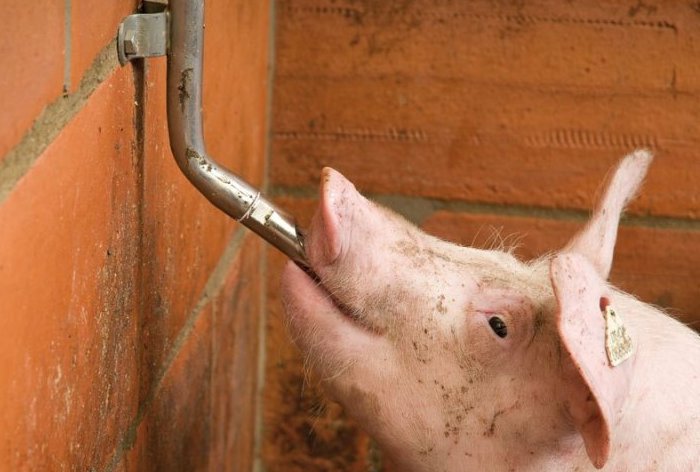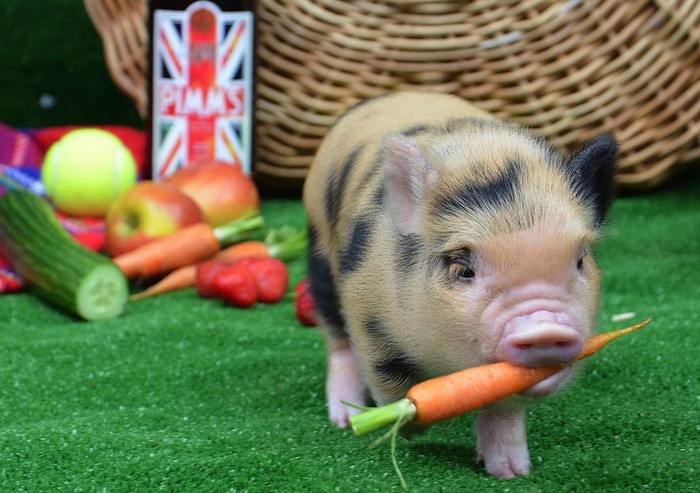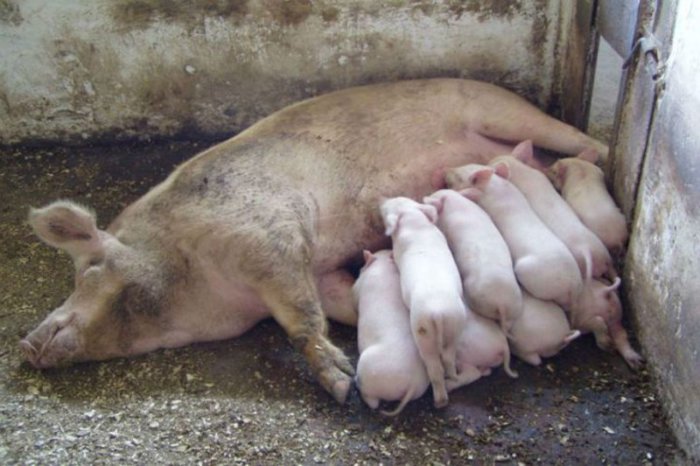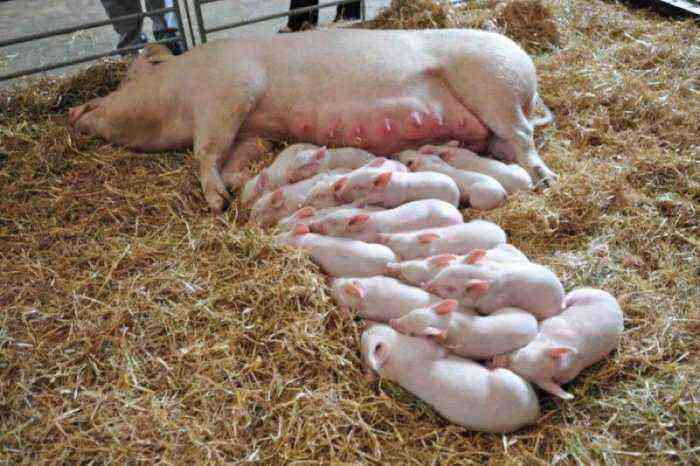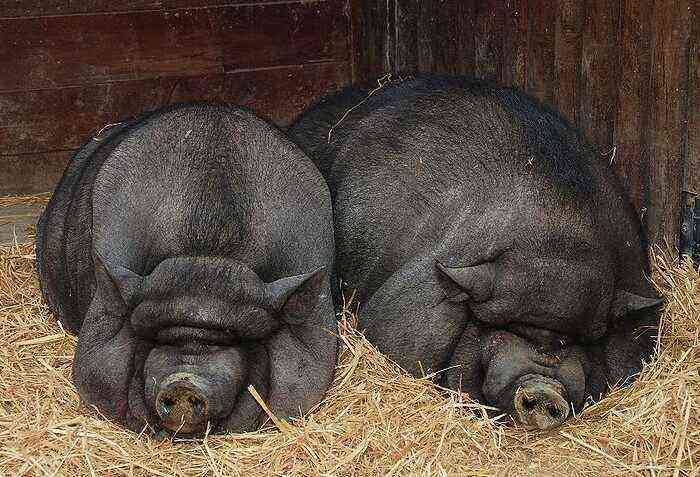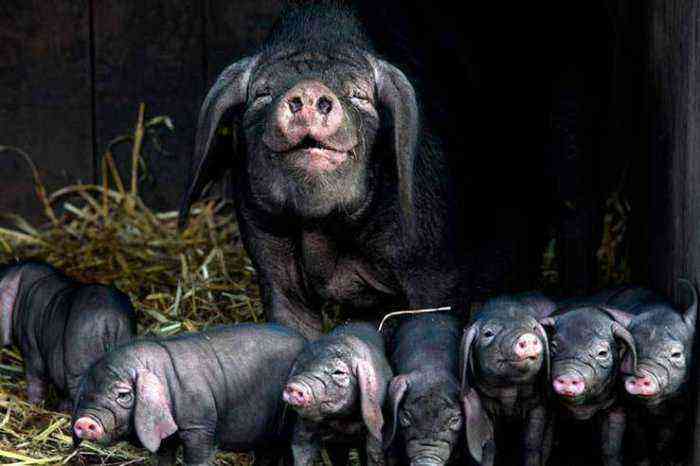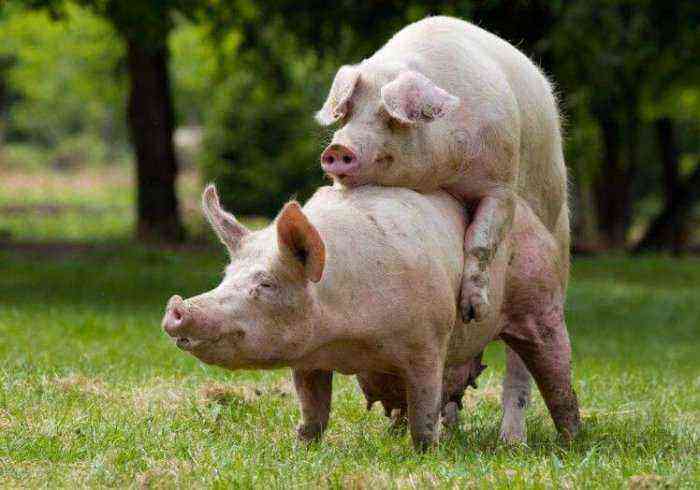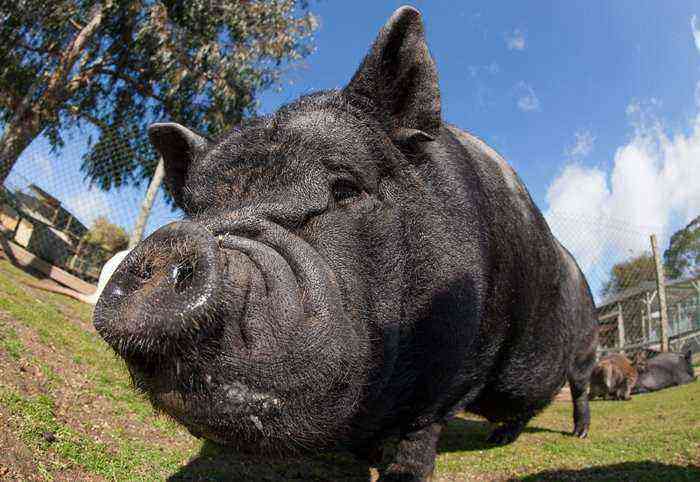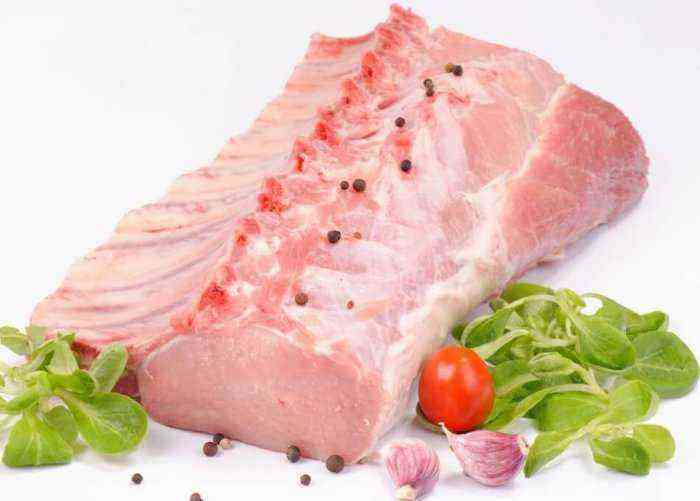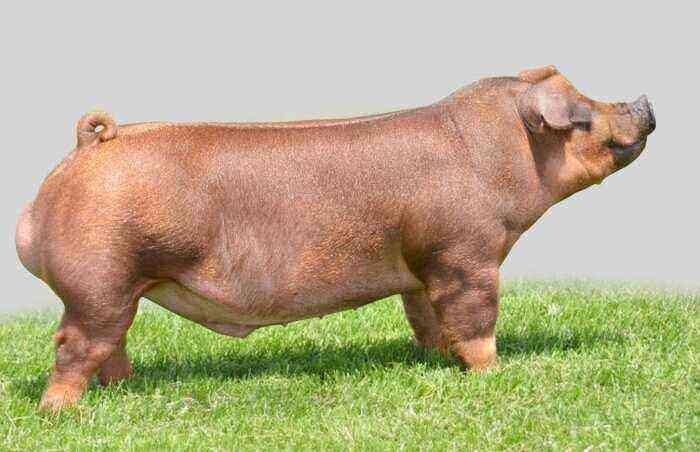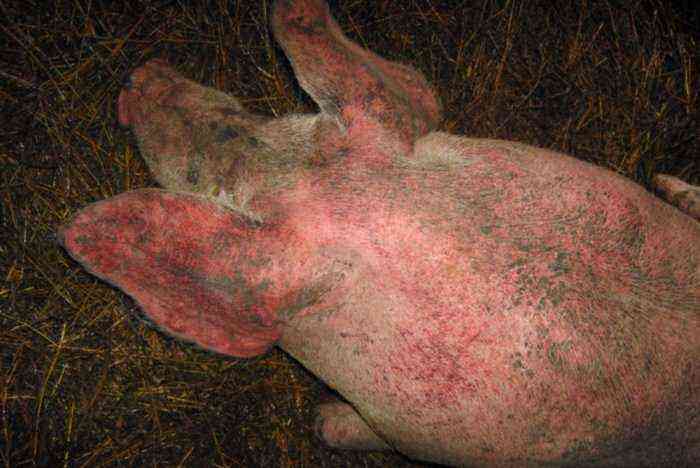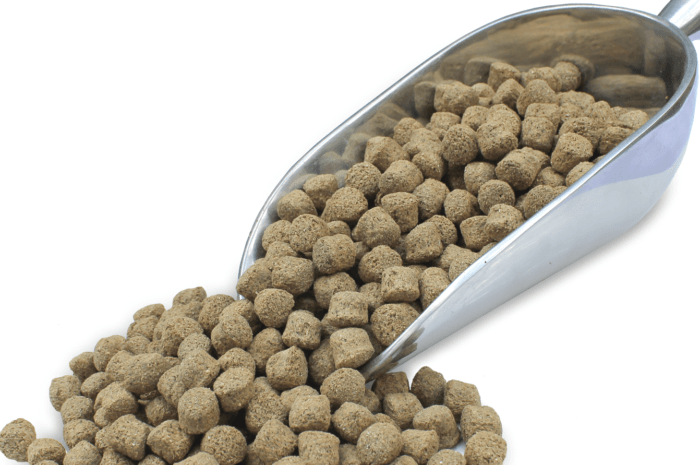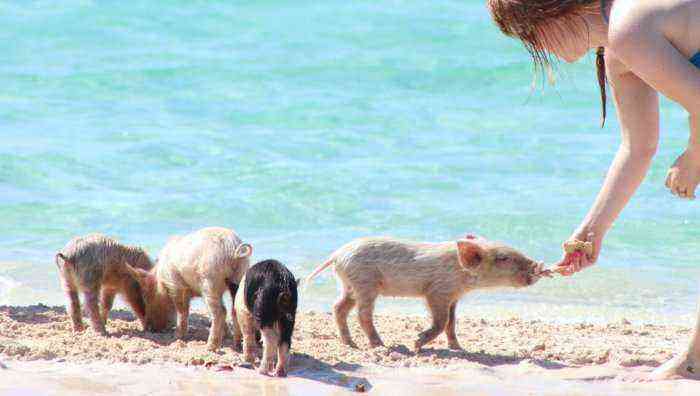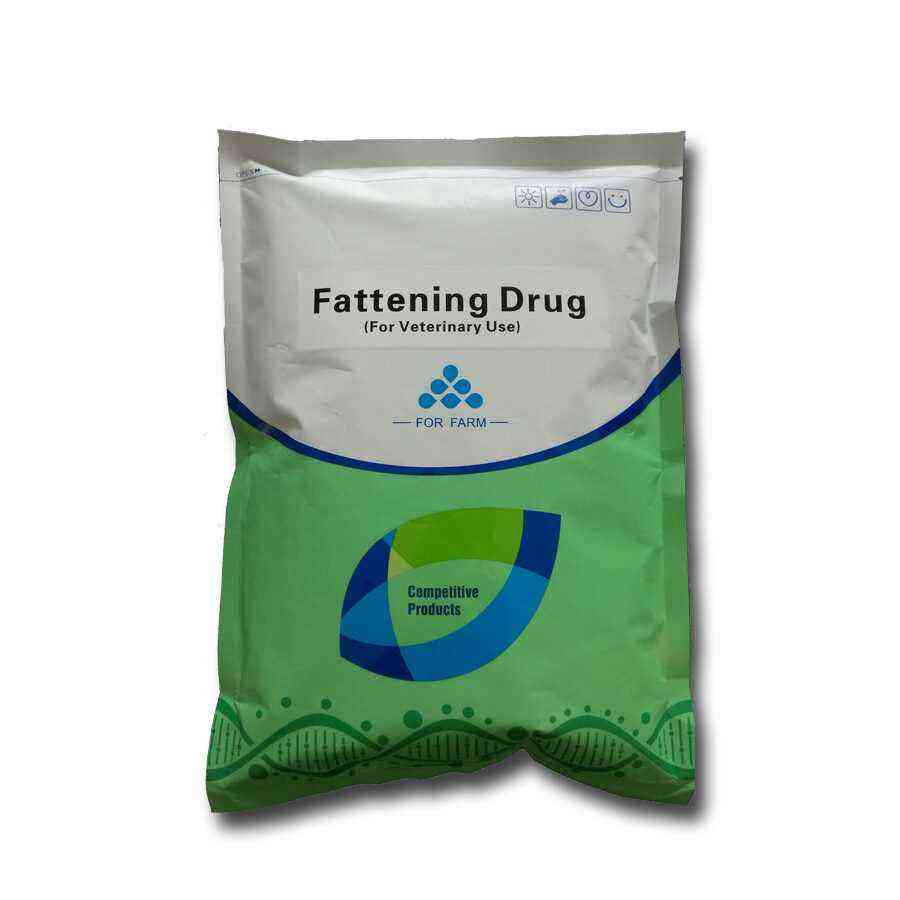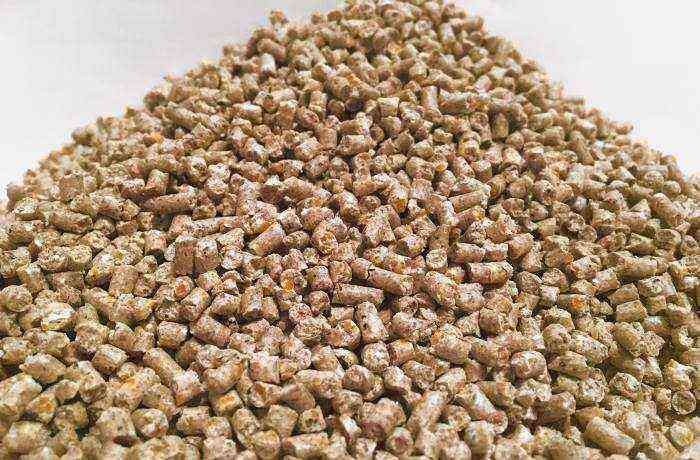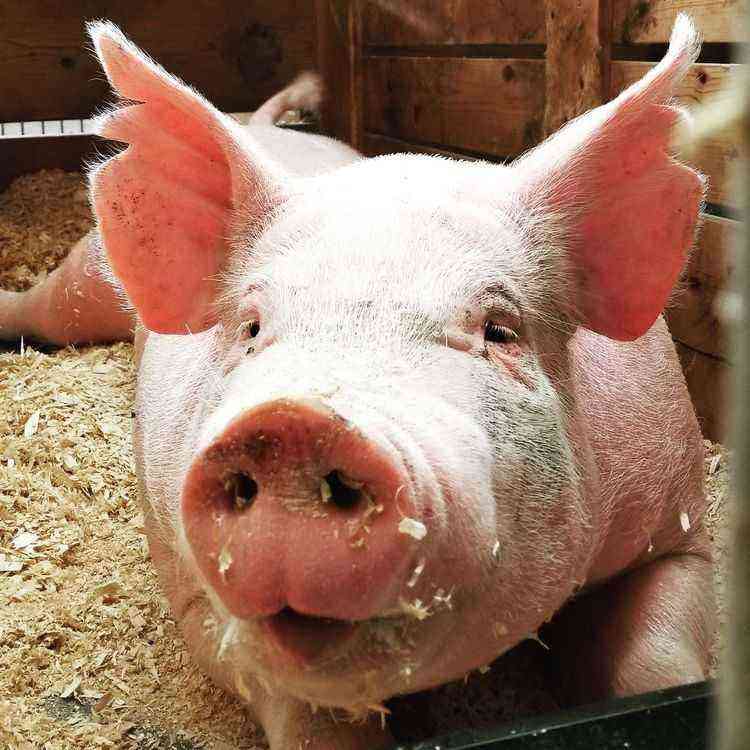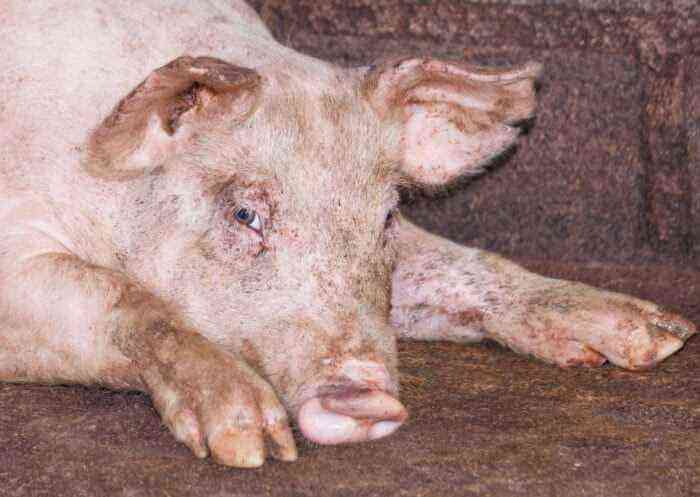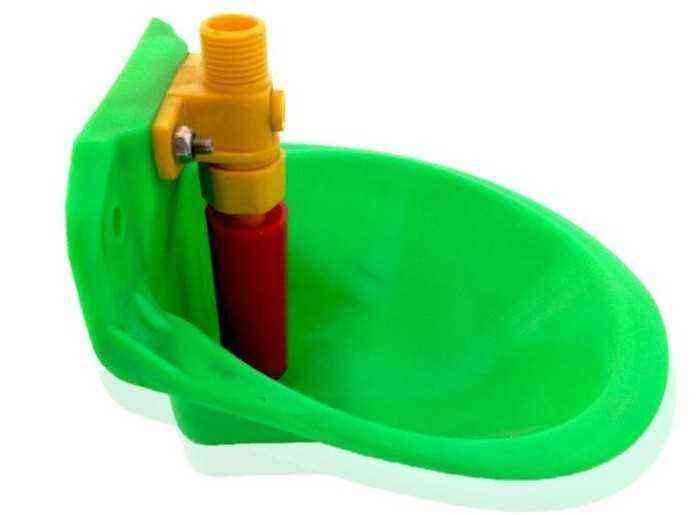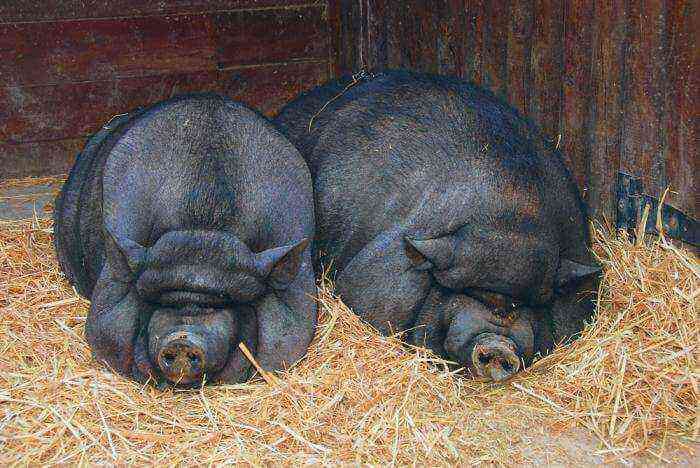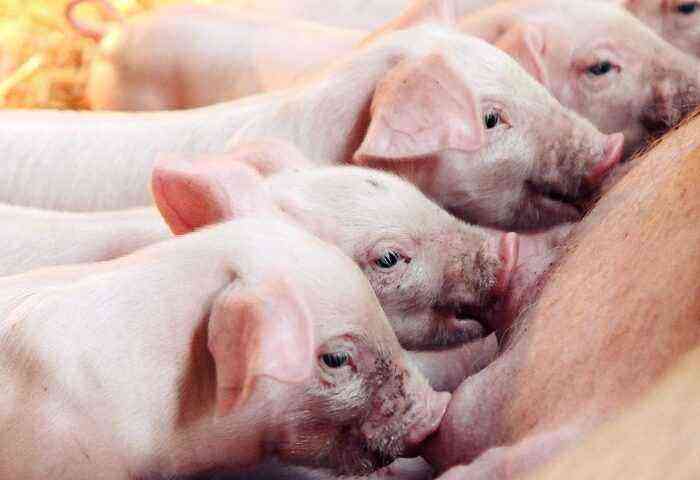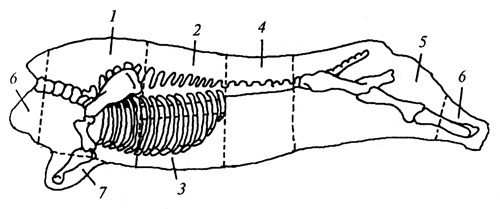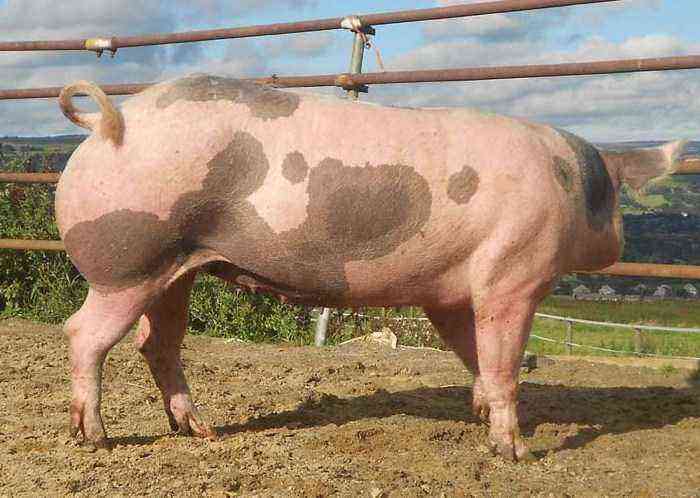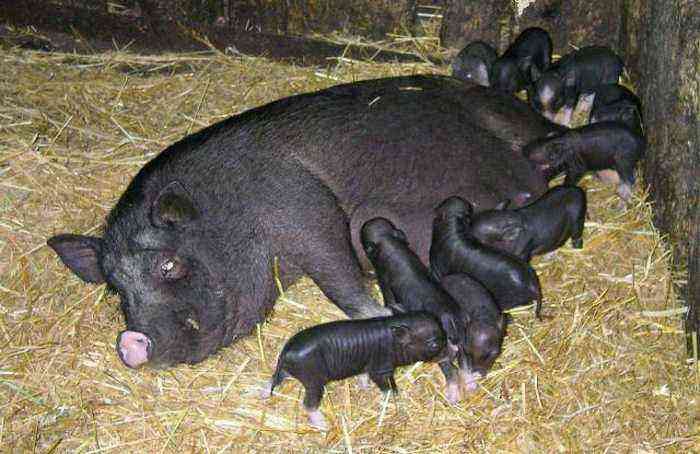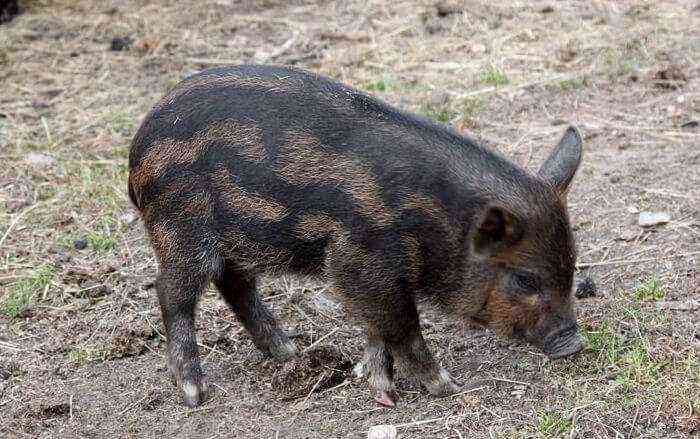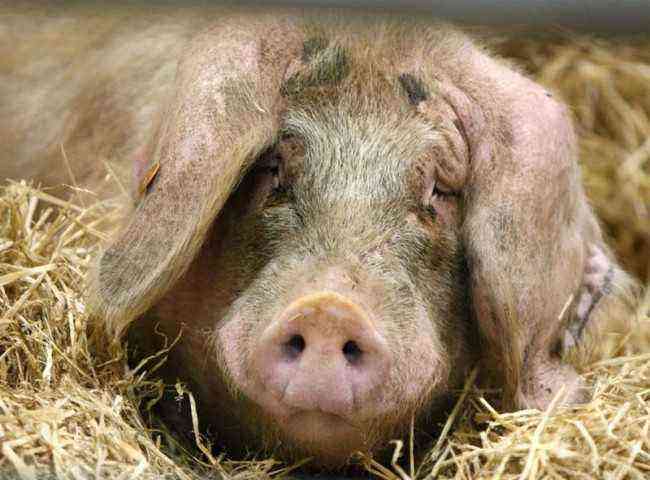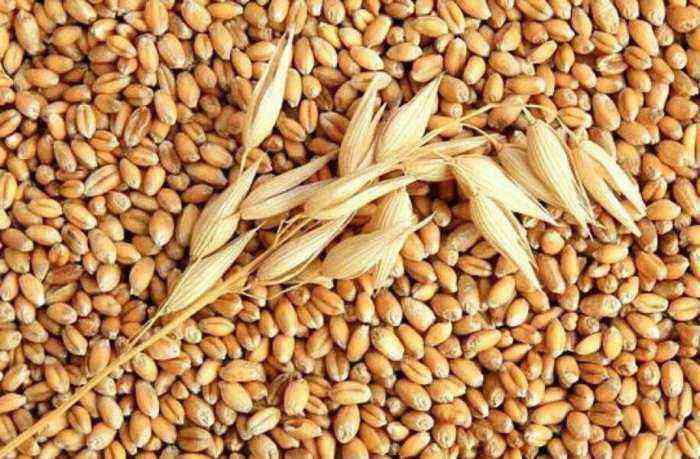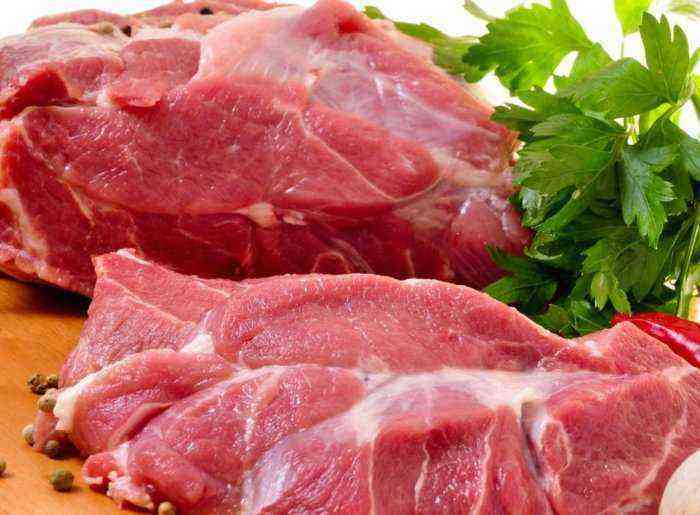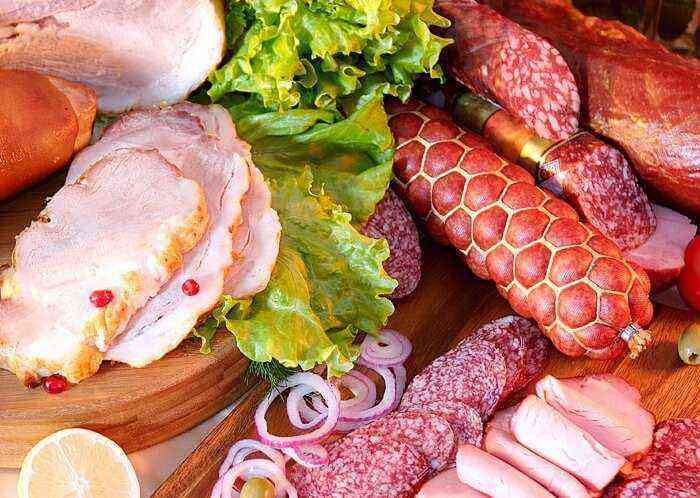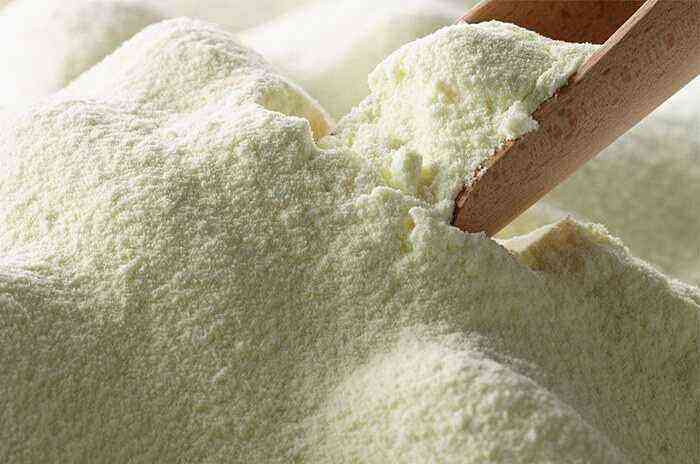Breeding pigs in a backyard or summer cottage is profitable and, with the right calculation, profitable. Pig breeding is a reliable way to eat fresh, organic meat without overpaying. The idea requires initial investments, time, knowledge and patience, but in the end, with the acquisition of experience, it brings the expected results.
Breeding pigs in the backyard
Is it profitable to keep pigs?
The benefit of the pig breeder, even if the goal is only to provide meat for his own family, is due to the characteristics of the animals:
- they quickly gain weight, the weight of a newborn piglet is about a kilogram, and after two months it increases by 15-20 times;
- a piglet grows 140 times in a year;
- pigs absorb a third of the food they eat, while, for example, ducks only a fifth;
- per kilogram of weight gain when fattening a pig, 30% less food is spent than in cattle;
- slaughter yield 85% (in cows 50-60%).
The benefits of animal reproduction are also interesting. Sows are prolific. For one farrowing, you can get 10 – 14 piglets, and twice as much in a year. The offspring is used for further breeding and fattening, increasing livestock. One uterus, taking into account the weight gain of the offspring, is capable of producing 2-3 tons of meat per year.
If there are no opportunities to increase the herd, and it is unprofitable to build additional premises for housing, suckling pigs, in themselves a valuable food product, are of interest to gourmets. They are easy to sell to other farms. Pigs are kept on many farms and in homes, so piglets are a sought-after commodity. Each in a month can be sold for 100 – 200 dollars.
Initial costs:
- construction of a pigsty;
- purchase of inventory;
- purchase of feed and livestock.
The cost estimate should include mandatory vaccination and castration of boars, take care of the legality of the sale of the product, and obtain the necessary documents from the sanitary authorities.
It is rational to organize the cultivation of feed for pigs in your own backyard. Some special supplements and vitamins will have to be bought anyway.
When drawing up a business plan, you need to distribute income over time. Plan for regular and gradual slaughter of animals and restocking with your own piglets or purchases from outside.
Drawing up a business plan
Pig keeping methods
You can keep pigs according to Canadian or Danish technology, use different methods of organizing animals living in a barn.
Technology features
Canadian is based on the use of bulk litter in a pigsty. It provides convenience and comfort for animals and creates additional warmth in cold weather. As a material use:
- sand;
- sawdust;
- straw.
This option is suitable for a farm of any size, from a backyard to a large herd.
The Danish technology is based on the use of a specially designed plastic floor or a large manure trough where the waste flows, making it easier to care for the animals. To do this, special slots are organized in the floor, which do not prevent the animals from moving, but contribute to the spontaneous removal of manure.
From the manure bath, the waste is sent to the manure collector through the disposal system. It, at the request of the owner, can be periodically pumped out using the services of sewers, or used as a fertilizer in crop production.
Automation of the pigsty cleaning process:
- reduces the time for animal care;
- reduces unpleasant odor;
- improves the hygienic indicators of keeping animals.
Although the initial cost of building a facility will be high, subsequent maintenance of the animals will be inexpensive. The use of automation technologies for the household is especially important if it is not the main activity.
Content methods
When breeding pigs, several ways of keeping are practiced:
- In regions with a warm climate – free-range. The doors from the pigsty to the fenced area are constantly open and the pigs can go out and back in whenever they want.
- The easel-walking method is based on the fact that each department has its own door, which is opened to animals only in good sunny weather. After the walk they are driven back.
- The non-walking method is used in large-scale production, on well-ventilated multi-storey pig farms. It is based on the fact that the animal spends its entire life indoors, where there is enough light and air.
Free-range keeping of pigs
Choose one of them depending on the climate and possibilities, territory and premises for keeping animals.
Basic requirements for a pigsty
The health and rate of weight gain of pigs is affected by housing conditions. A good pigsty provides:
- enough light and fresh air,
- free space at the rate of 4 sq. m. for a piglet or a boar and 6 sq.m. for a sow;
- warm and no drafts.
The windows are located one by 10-15 squares by 1,5 meters from the floor so that there is enough natural light; in winter, special lamps are turned on, located above the feeders.
The pigsty is divided into separate sections, each of which is designed for several individuals. Separately contain sows with cubs. Piglets weaned from the female feel great in pens of 20-30 individuals. For boars, sections designed for 8-10 heads are suitable.
The pigsty is built from different materials:
- wood: summer from boards, winter from logs or timber;
- foam concrete or slag concrete;
- from brick, sibita, concrete goods.
It is important that it is warm and protected from drafts. A quick weight gain by piglets will allow you to successfully complete fattening in the warm summer period, so you can do without the construction of a capital heated building. For fattening for 8-9 months, a plank barn is enough. It must be so strong that animals cannot destroy it during active movement.
If the walls are stone, plaster and whitewash are required. It is useful to sheathe the wall with boards to a height of 1 m from the floor. This will add warmth and protect the structure from wear.
The ceiling is organized from boards and or concrete slabs and is insulated with inexpensive materials: sawdust, sand, earth. Cover the building:
- slate;
- roofing felt;
- professional sheet;
- flat roofing iron.
In the barn, it is necessary to organize the fight against mice and rats. It is dangerous to use poisons as it can harm the animals. An effective method is ultrasonic repellers in sufficient quantities to fill the entire room with sound.
In the cage where the piglets will be kept, you need to prepare special lamps and thoughtful drinking bowls. To service the pigs, you will need pitchforks, rakes and shovels.
Drinker for pigs
When organizing a pigsty, think about a place for walking. In the fresh air, piglets gain weight faster and develop immunity. The presence of a spacious fenced area in front of the pigsty is a guarantee of animal health and the quality of the final product.
Breeding piglets
It is worth starting to breed and keep piglets at home with a small number, one or two individuals, depending on the needs and size of the room. If you are planning a profitable business, it is worth buying 250-300 heads, of which 8 will be hogs, 20 will be sows, and the rest will be piglets for fattening.
Breed selection
When starting to breed pigs, it is important to choose the right breed. The Russian market offers more than 35 options. They differ in various ways. Depending on the characteristics of the final product, there are:
- lard-meat;
- meat-sebaceous;
- bacon.
The level of weight gain, fertility, disease resistance, and the quality of the final product depend on the breed. If this is your first time piglet breeding, stick with the hardy white pigs. This meat is greasy white. She puts on more muscle than fat. Landrace is characterized by a small greasy layer, a massive back and ham. These breeds have a large offspring and a weight gain of 700 – 900 grams per day.
When you buy piglets, do not place them at once with the whole herd. Quarantine is required, keeping separately for 2 weeks – a month. This will protect the herd from infections introduced from outside.
Catering services
In order for piglets to grow up healthy, at the first stages they need to be fed fractionally, after 2-3 hours. Main food:
- dairy;
- porridge with milk;
- special compound feed;
- vitamin supplements.
At 2 – 2,5 months, the cubs need to be taken away from the female and gradually begin to feed 3 times, reducing the amount of milk, replacing it with reverse. Fresh grass and hay, which are steamed in hot water, are suitable for feeding young animals. From 2 to 4 months, you should not feed raw potatoes, it is better to boil them. Carrots can be given raw, finely chopped or grated.
Carrots for pigs
Pig breeding
The puberty of pigs occurs at 8-9 months, therefore, the first offspring appears already at 11-14 months. From the total population for breeding, a healthy pig weighing at least 100 kg., with well-formed 12 teats, is selected.
Before pregnancy, the pig’s diet is changed, enriching it:
- dairy products;
- waste from the human table;
- compound feed;
- greens.
You can determine the time favorable for insemination by the behavior of the pig. She will start:
- listen;
- refuse food;
- grunting is typical.
Fertilization is favorable 12 hours after the start of estrus. After another 12 hours, the process is repeated. After 17 days, observe the behavior of the animal. If signs of sexual desire appear again, then the insemination was unsuccessful and it needs to be repeated.
Care after childbirth
After childbirth, not only piglets are in a vulnerable position, but also the sow. She needs to be given a liter of liquid, water or milk diluted with water. Only after 6 hours are they allowed to drink enough. At first, only liquid food is given, the next day – root crops to speed up lactation. A lactating female needs to eat three times a day.
After farrowing, care should be taken for each piglet:
- wipe;
- clean ears, patch, mouth;
- lubricate the cut of the umbilical cord with iodine.
Monitor contact with the mother. To do this, attach the piglet to the breast no later than 45 minutes after birth. If he is late, his mother will not recognize him.
Natural feeding of piglets
Caring for pigs at home
Raising pigs in a backyard differs significantly from industrial breeding on large farms. To get great results:
- place a thermometer in the pigsty that will help control the temperature: for young animals 18-23 degrees, for the rest – 12-15;
- take care of the humidity in 70-75%, regularly clean, clean and ventilate the room;
- protect animals from drafts and cold, take care of insulation, sealing the floor and window openings;
- periodically clean the floor of the pigsty, an open area where animals walk, this will protect against diseases;
- walk the pigs, the more the better;
- regularly change the water in the drinkers, do not let it stagnate and sour;
- clean the feeders after each meal;
- disinfect once a month;
- choose the right diet, feed 2 times a day, use, in addition to cereals and hay, fresh grass, vegetables, vitamin supplements.
Pig farming can be a hobby or a help in providing a family with wholesome healthy food. Then it is reasonable to have a small number of livestock and mechanization of animal care processes.
Raising pigs for meat
You can grow a pig for meat until it reaches a weight of 100 kg. Depending on the breed and care, this happens at 7-10 months of life. Pork is in relentless demand, because this tasty meat is well absorbed by the body, is a source of protein and valuable amino acids.
It is worth taking care of the sales market even before the construction of the pigsty and the purchase of piglets. If you decide to start pig farming for profit, make a detailed business plan and think through all the details.


